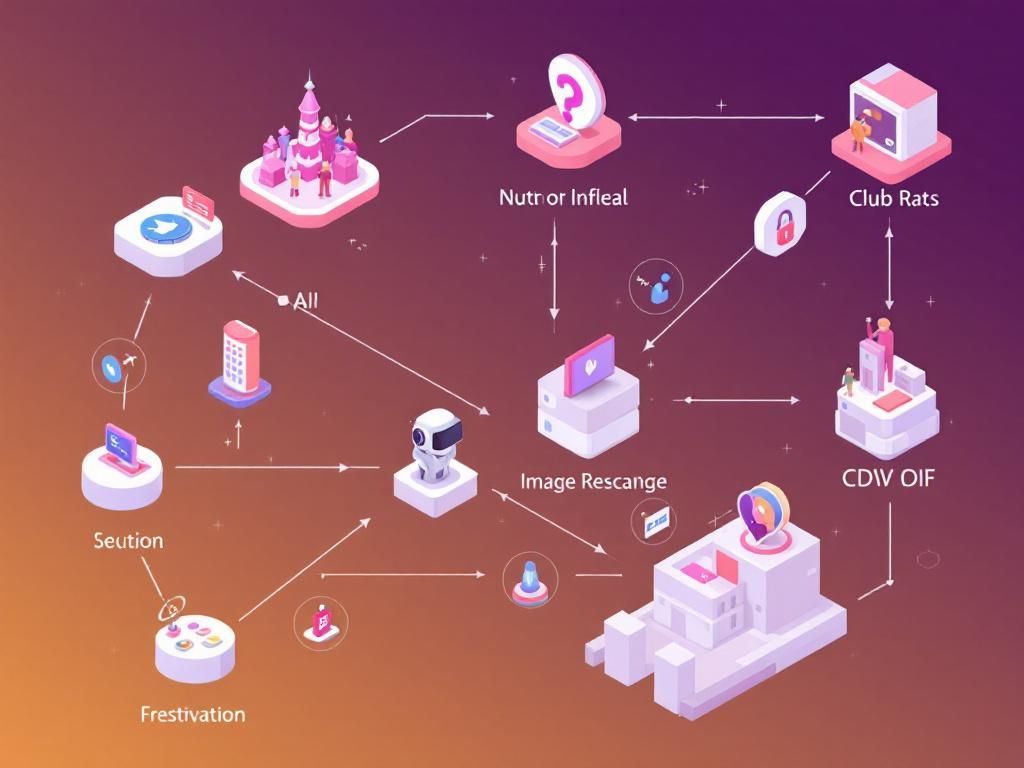As we enter a new era of technological advancement, the importance of artificial intelligence in security applications is more pronounced than ever. With the prevalence of surveillance systems and the increasing need for efficient, reliable, and accurate image recognition capabilities, AI-driven platforms have emerged as crucial tools for enhancing security measures across various industries. This article delves into the leading AI image recognition platforms for security in 2025, exploring their features, benefits, and potential applications.
Understanding AI Image Recognition
AI image recognition involves the use of computer algorithms to analyze visual data and identify patterns, objects, or specific details within images. This technology has evolved significantly, thanks to advancements in machine learning and deep learning. By harnessing vast datasets and powerful computational resources, AI image recognition systems can achieve remarkable accuracy and efficiency.
Key Features of AI Image Recognition Platforms
- Real-time Processing: Ability to analyze images as they are captured, enabling immediate decision-making.
- High Accuracy: Advanced algorithms that minimize false positives and negatives.
- Scalability: Adaptable solutions that can handle varying volumes of data.
- Integration Capabilities: Seamless compatibility with existing security infrastructure.
- User-friendly Interfaces: Intuitive dashboards for easy monitoring and management.
Benefits of Implementing AI Image Recognition in Security
- Enhanced Surveillance: Provides a 24/7 monitoring solution that can detect suspicious activities in real time.
- Resource Optimization: Reduces the need for human oversight, allowing security personnel to focus on critical tasks.
- Improved Incident Response: Quickly identifies and alerts security teams to potential threats, minimizing response time.
- Data-Driven Insights: Analyzes patterns over time, leading to informed decision-making and strategic planning.
Leading AI Image Recognition Platforms for Security in 2025
Several platforms stand out in the competitive landscape of AI image recognition for security. Below are some of the most notable options available:
| Platform | Key Features | Target Industries |
|---|---|---|
| OpenCV | Open-source library, customizable algorithms, extensive community support. | Retail, transportation, public safety. |
| Amazon Rekognition | Real-time analysis, facial recognition, integration with AWS services. | Healthcare, finance, law enforcement. |
| Google Cloud Vision API | Powerful machine learning capabilities, object detection, OCR functionalities. | Media & entertainment, marketing, security. |
| Microsoft Azure Computer Vision | Image tagging, spatial analysis, content moderation. | Manufacturing, smart cities, cybersecurity. |
1. OpenCV
OpenCV (Open Source Computer Vision Library) is a robust platform that offers a comprehensive suite of tools for image processing and computer vision applications. Its open-source nature allows developers to customize algorithms and create tailored solutions suited to specific security needs.
2. Amazon Rekognition
Amazon Rekognition provides an intuitive interface for image and video analysis. It employs deep learning models to identify objects, people, and activities in real-time, making it an ideal choice for sectors like healthcare and law enforcement where timely responses are critical.
3. Google Cloud Vision API
This platform excels in powerful image recognition capabilities, allowing users to detect objects and read text within images. It is particularly beneficial for media and marketing industries, where understanding visual content is crucial.
4. Microsoft Azure Computer Vision
Microsoft’s Azure Computer Vision offers comprehensive image analysis features, including advanced tagging and spatial analysis. It enables enterprises to enhance operational efficiency and improve security measures through actionable insights derived from visual data.
Challenges in AI Image Recognition
Despite the many advantages, there are notable challenges to be aware of when implementing AI image recognition technologies in security:
- Data Privacy Concerns: Handling sensitive visual data requires stringent compliance with privacy regulations.
- Algorithm Bias: Inaccuracies may arise from biased training datasets, leading to unequal performance across diverse demographics.
- Integration Issues: Existing infrastructure may not always seamlessly incorporate new AI-driven technology.
- High Initial Costs: Developing and deploying sophisticated AI systems can be expensive.
Future Trends in AI Image Recognition for Security
Looking forward, several trends are poised to shape the evolution of AI image recognition in security:
- Increased Automation: Automation will reduce the reliance on human oversight, enhancing overall security efficiency.
- Enhanced Privacy Measures: Technologies will emerge to address data privacy concerns while maintaining performance.
- Integration with IoT: AI image recognition systems will increasingly pair with IoT devices for smarter security solutions.
- Edge Computing: Processing data closer to the source will reduce latency and improve real-time analysis.
Conclusion
AI image recognition platforms are transforming the landscape of security by providing powerful tools that enhance surveillance, optimize resources, and improve incident response times. While challenges remain, the continuous advancement in technology offers promising solutions for the future. By understanding the capabilities of these platforms and staying informed of emerging trends, organizations can effectively bolster their security infrastructure and ensure a safer environment for all.
FAQ
What are the top AI image recognition platforms for security in 2025?
Some of the leading AI image recognition platforms for security in 2025 include Amazon Rekognition, Google Cloud Vision, Microsoft Azure Computer Vision, and IBM Watson Visual Recognition.
How does AI image recognition improve security measures?
AI image recognition enhances security by enabling real-time surveillance analysis, identifying potential threats, automating monitoring processes, and improving incident response times.
What industries benefit most from AI image recognition in security?
Industries such as retail, transportation, banking, and public safety significantly benefit from AI image recognition for surveillance, fraud detection, and threat assessment.
Are AI image recognition technologies accurate?
Yes, AI image recognition technologies have become increasingly accurate, with many platforms achieving over 95% accuracy in identifying objects and faces under various conditions.
What are the privacy concerns related to AI image recognition in security?
Privacy concerns include unauthorized surveillance, data misuse, and the potential for bias in algorithms, which can lead to false identifications or discriminatory practices.




